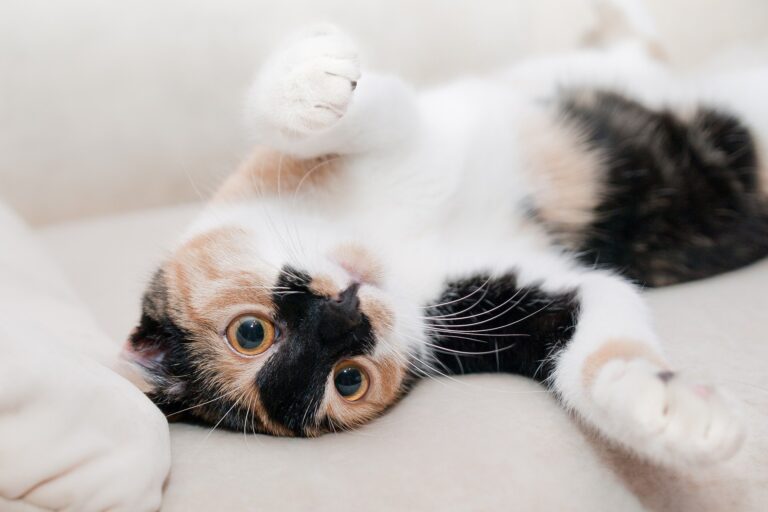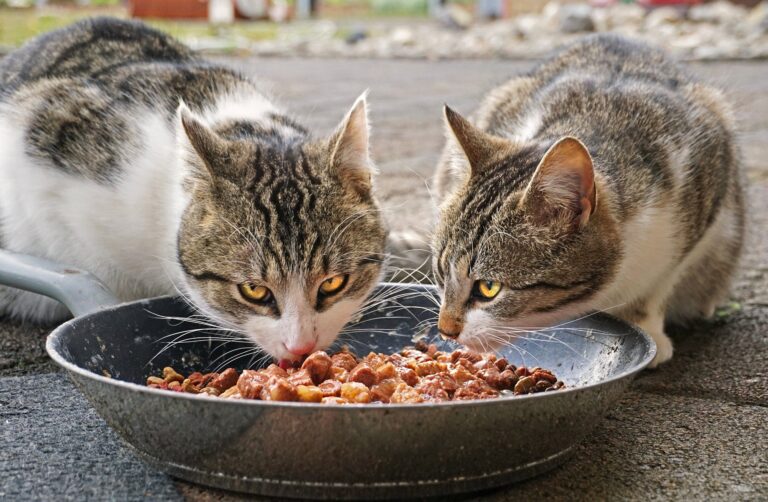Intestinal obstruction in a cat can have various causes. The consequence is that food only partially or not at all passes through the digestive tract. It is noticeable, for example, by multiple and violent vomiting and persistent loss of appetite.
How does intestinal obstruction occur in cats?
The causes of intestinal obstruction in cats can be varied. It is also possible that it occurs in different parts of the intestine. For example, occlusions in the small intestinal tract are more common than in the large intestine. A distinction must be made between mechanical obstruction and paralytic obstruction.
Mechanical ileus, as intestinal obstruction in the cat is also called, is characterized by mechanical obstructions restricting the inner layer of the intestinal wall. This results from constriction, for example, triggered via a tumor, obstruction of the inner layer of the intestine by fecal stones or foreign bodies, and strangulation
The latter is a possible consequence of intestinal twisting or intussusception. Foreign bodies in particular are frequent causes of mechanical obstruction, for example, when a piece of string, small buttons, marbles, parts of toys or other objects are swallowed and the cat is unable to expel them. Likewise, intestinal obstruction can occur in the cat when shedding is imminent and larger hairballs enter the gastrointestinal tract as a result of grooming.
The paralytic closure forms a paralysis of the intestinal muscles. End inflammations in the abdominal cavity, but also consequences of an operation are possible triggers for this. In addition, such an obstruction can also be caused by a metabolic disorder or poisoning. An incorrect diet can also be a possible cause.
Typical symptoms of intestinal obstruction
A particularly clear sign that your cat could suffer from an intestinal obstruction is the persistent and repeated vomiting. Also missing bowel movements belong to the typical symptoms. If you have an indoor-only cat, this can be quickly detected by observing the litter box, but with outdoor cats it is not always possible to determine this directly. The longer the intestinal obstruction persists, the more symptoms may be added. These include the following problems:
- general immobility and restlessness
- frequent retching
- Loss of appetite and weight
- severe tightening of the abdominal wall; usually the cat is also sensitive to touch in this area
- Breathing problems
- Circulatory problems
Diagnostic methods in the detection of intestinal obstruction in a cat
If you suspect that your cat has an intestinal obstruction, you should not wait long and take him to the vet as soon as possible. He can find out what is wrong with your four-legged friend through specific examinations and a medical history. For this purpose, an examination of the abdominal area is carried out with careful palpation, followed by an X-ray or an ultrasound of the digestive tract
In this way, the veterinarian will identify the cause of the intestinal blockage and the location of the obstruction. He will also ask you in detail about the symptoms and possible triggers that you have observed – such as swallowing foreign bodies. If in doubt, it is a good idea to make a quick note of these beforehand so that you do not forget anything important in the excitement. On the basis of the examination the further planning of the treatment of your velvet paw takes place. It may be necessary to operate on the animal, but sometimes conservative methods such as medication can already provide relief.
Intestinal obstruction in cats – what are the risks?
The faster a cat’s intestinal obstruction is treated, the better the chances of recovery. If left untreated, it can become life-threatening. Possible complications also include damage to other organs, blood poisoning or peritonitis. However, with early detection, the chances are good that the animal will make a full recovery and not suffer any further damage or permanent discomfort.
Preventive measures against intestinal obstruction in a cat
You can not completely eliminate the risks that promote intestinal obstruction. Especially young cats quickly swallow foreign bodies while playing. This can not always be completely excluded, even if you keep an eye on your animal. A sensible preventive measure is not to leave any objects lying around that are too small, in order to minimize the risk of swallowing
Even a piece of woolen thread or a rubber band can trigger the occlusion. If the animal has access to indoor, balcony or garden plants, find out beforehand whether they are poisonous and, if in doubt, opt for harmless plants. Intestinal paralysis or other gastrointestinal problems can be caused by yew or oleander, among others. It is also important to provide a species-appropriate, digestive-friendly diet that does not unnecessarily stress the intestinal tract. Here, for example, grain-free food that is low in fiber has proven successful. If the cat often tries to vomit fur balls, you help it by giving it edible oils.
Intestinal obstruction cat: FAQ
What is an intestinal obstruction?
An intestinal obstruction is an interruption of the intestinal passage. In this case, food can no longer pass through the digestive tract of the intestine and the intestinal contents can no longer be excreted. Thus, the cat can no longer utilize the food it has received. This is dangerous because cats are not able to build up reserves and therefore depend on a regular intake of food. The consequence of an intestinal obstruction is an increased production of bacteria. In extreme cases, this can cause poisoning.
What to do if an intestinal obstruction occurs in the cat?
If your four-legged friend has an intestinal obstruction, time is of the essence. Take the animal to the veterinarian immediately for a prompt examination and diagnosis. The sooner the intestinal obstruction in the cat is detected and treated, the less pain and suffering the velvet paw will have to endure. It is absolutely not advisable to take measures on your own, such as trying to give food or water or massaging the abdomen.
How is the intestinal obstruction treated in a cat?
How the obstruction is treated depends on the cause and exactly where it occurred. In cases of emergency, for example, due to strangulation, surgical measures are inevitable
If the intestinal muscles are paralyzed or the animal has swallowed a smaller foreign body, conservative treatment methods can also already achieve good results. These include a short-term withdrawal of water and food or a fluid infusion. Relief can also be achieved with the administration of medications that are effective against pain, nausea and vomiting or that stimulate intestinal activity and have a laxative effect.
When does it become dangerous if a cat does not have a bowel movement?
Constipation can be a precursor to intestinal obstruction. Approximately 12 to 24 hours pass between eating and defecating. Since the animal eats food daily, it should also have a daily bowel movement. One or two days without defecation need not be a direct cause for concern, but if it lasts longer, you should be vigilant and have the cat medically examined.
How does a cat behave when it has an intestinal obstruction?
Cats, being predators, are good at not letting on when they are in pain. However, if the animal vomits multiple times, this may indicate an obstruction in the intestine. Generally, changes in behavior, refusal to eat, or tenderness in the abdominal area are clues that your velvet paw may not be doing well and that an intestinal obstruction is present.









